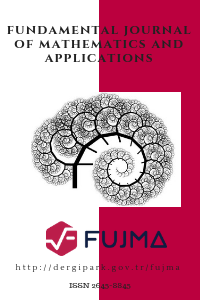Set-Valued Stabilization of Reaction-Diffusion Model by Chemotherapy and or Radiotherapy
Set-Valued Stabilization of Reaction-Diffusion Model by Chemotherapy and or Radiotherapy
This paper aims to control partial differential equations, modeling cancer chemotherapy and or radiotherapy, so in order to asymptotically stabilize the tumor density. Viability kernel of general model on set of initial condition is used to solve the control problem, and characterize the control solution as regulation law of regulation map. Three models from the literature are considered to simulate the results. The first model includes chemotherapy effect on logistic tumor proliferation, while the second one demonstrates radiotherapy effect on exponential tumor increasing, whereas the third one models the effects of the combination of chemotherapy and radiotherapy on Gompertzian tumor growth.
Keywords:
Chemotherapy, Radiotherapy, Reaction-diffusion equation, Set-valued analysis Viability theory,
___
- [1] V. Noviantri, T. Tomy, A. Chowanda, Linear and nonlinear model of brain tumor growth simulation using finite difference method, Procedia Comput. Sci., 179 (2021), 297-304.
- [2] F. Mohd, H. Sulaiman, N. A. Alias, Modified Swanson’s equation to detect the growth of glioblastomas multiforme (GBM) tumour, Int. J. Adv. Res. Eng. Innıv., 3(1) (2021), 1-18.
- [3] Y. Zhang, P. X. Liu, W. Hou, Modeling of glioma growth using modified reaction-diffusion equation on brain MR images, Comput. Methods Programs Biomed., 227 (2022), 107233.
- [4] N. Henscheid, Generating patient-specific virtual tumor populations with reaction-diffusion models and molecular imaging data, Math. Biosci. Eng., 17(6) (2020), 6531-6556.
- [5] A. K. Y. Tam, M. J. Simpson, Pattern formation and front stability for a moving-boundary model of biological invasion and recession, Phys. D: Nonlinear Phenom., 444 (2023), 133593.
- [6] V. A. Khoa, Convergence of a spectral regularization of a time-reversed reaction-diffusion problem with high-order Sobolev-Gevrey smoothness, J. Math. Anal. Appl., 518(1) (2023), 126666.
- [7] B. Liang, L. Lozenski, U. Villa, D. Faghihi, PDE-constrained optimization formulation for tumor growth model calibration, ArXiv Preprint ArXiv:2302.06445, (2023).
- [8] K. N. Soltanov, Behavior of solutions nonlinear reaction-diffusion PDE’s relation to dynamics of propagation of cancer, ArXiv Preprint ArXiv:2108.03023, (2021).
- [9] N. A. Nayied, F. A. Shah, K. S. Nisar, M. A. Khanday, S. Habeeb, Numerical assessment of the brain tumor growth model via fibonacci and haar wavelets, Fractals, 31(2) (2023), 2340017.
- [10] R. Everett, K. B. Flores, N. Henscheid, J. Lagergren, K. Larripa, D. Li, T. J. Nardini, P.T.T. Nguyen, E. B. Pitman, E. M. Rutter, A tutorial review of mathematical techniques for quantifying tumor heterogeneity, Math. Biosci. Eng., 17(4) (2020), 3660-3709.
- [11] I. Mazari, The bang-bang property in some parabolic bilinear optimal control problems via two-scale asymptotic expansions, J. Funct. Anal., 284(10) (2023), 109855.
- [12] N. Moshtaghi-Kashanian, H. Niroomand-Oscuii, N. Meghdadi, Simulating glioblastoma growth consisting both visible and invisible parts of the tumor using a diffusion–reaction model followed by resection and radiotherapy, Acta Neurol. Belg., 120 (2020), 629-637.
- [13] M. S. Iqbal, N. Ahmed, R. Naeem, A. Akg¨ul, A. Razzaque, M. Inc, H. Khurshid, Dynamical behavior of cancer cell densities in two dimensional domain by the representation theory of solitons, Phys. Lett. A, 463 (2023), 128670.
- [14] G. Baravdish, B. T. Johansson, O. Svensson, W. Ssebunjo, Identifying a response parameter in a model of brain tumor evolution under therapy, IMA J. Appl. Math., (2023), 1-27.
- [15] A. Moustafid, General chemotherapy protocols, J. Appl. Dyn. Syst. Control, 4(2) (2021), 18-25.
- [16] A. Moustafid, Set-valued control of cancer by combination chemotherapy, J. Math. Sci. Model.,6(1) (2023), 7-16.
- [17] A. Moustafid, Viability control of chemo-immunotherapy and radiotherapy by set-valued analysis, Int. J. Inform. Appl. Math., 6(1) (2023), 40-60.
- [18] A. Moustafid, Set-valued analysis of anti-angiogenic therapy and radiotherapy, Math. Model. Numer. Simul. Appl., 2(3) (2022), 187-196.
- [19] K. Kassara, A. Moustafid, Angiogenesis inhibition and tumor-immune interactions with chemotherapy by a control set-valued method, Math. Biosci., 231(2) (2011), 135-143.
- [20] A. Moustafid, General anti-angiogenic therapy protocols with chemotherapy, Int. J. Math. Model. Comput., 11(3) (2021), 1-14.
- [21] A. Moustafid, Feedback protocols for anti-angiogenic therapy in the treatment of cancer tumors by chemotherapy, Int. J. Optim. Appl., 2 (2022), 17-24.
- [22] L. Boujallal, M. Elhia, O. Balatif, A novel control set-valued approach with application to epidemic models, J. Appl. Math. Comput., 65 (2021), 295-319.
- [23] K. Kassara, A unified set-valued approach to control immunotherapy, SIAM J. Control Optim., 48(2) (2009), 909-924.
- [24] M. Yousefnezhad, C. Y. Kao, S. A. Mohammadi, Optimal chemotherapy for brain tumor growth in a reaction-diffusion model, SIAM J. Appl. Math., 81(3) (2021), 1077-1097.
- [25] R. Rockne, E. C. Alvord, J. K. Rockhill, K. R. Swanson, A mathematical model for brain tumor response to radiation therapy, J. Math. Biol., 58 (2009), 561-578.
- [26] G. B. Powathil, Modeling of Brain Tumors: Effects of Microenvironment and Associated Therapeutic Strategies, (2009), http://hdl.handle.net/10012/4738.
- [27] J. Aubin, Viability Theory, Springer Science & Business Media, (2009).
- ISSN: 2645-8845
- Yayın Aralığı: Yılda 4 Sayı
- Başlangıç: 2018
- Yayıncı: Fuat USTA
